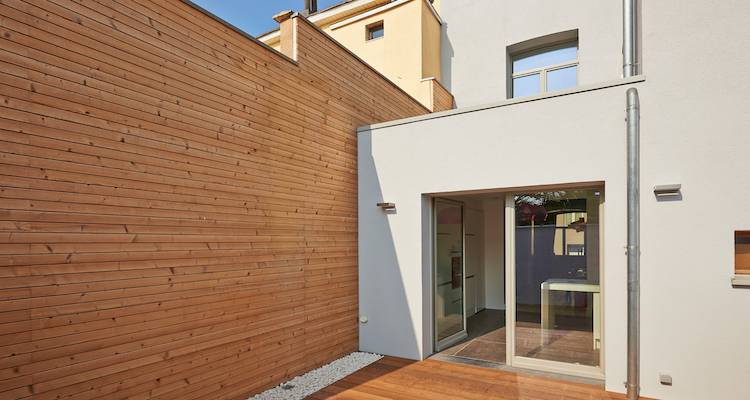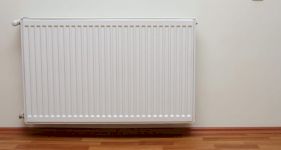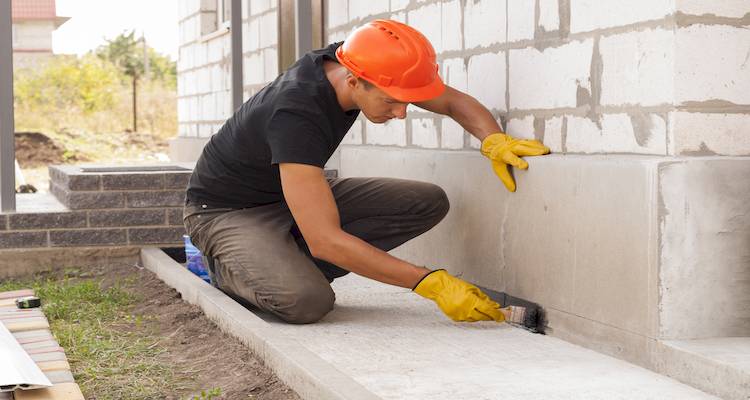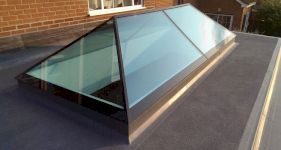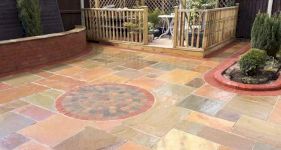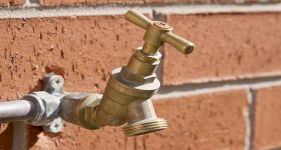Satellite Dish Installation Cost
Satellite television can be a great alternative to traditional cable services. Although it is difficult to predict the exact cost of installing a satellite dish, there are a few variables that all builders will use to determine local pricing.
So first, we'll go over the various costs of installing a satellite dish and the factors influencing them.
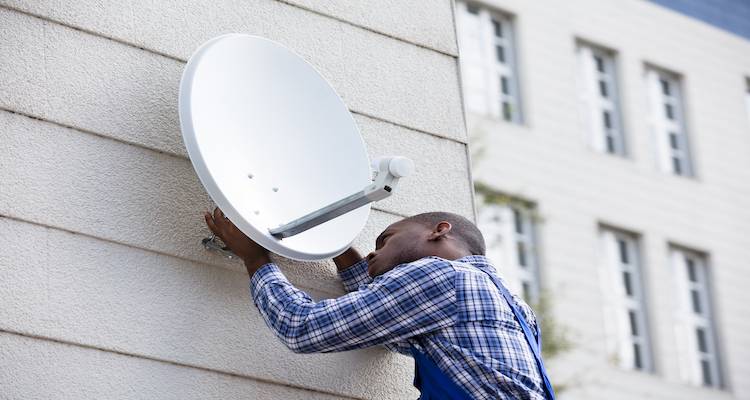
£150
Table of Contents
- How Much Does Installing a Satellite Dish Cost?
- Signal for Freeview
- Supply Only Costs
- Additional Costs
- Labour Costs and Timescales
- Cost Factors of Installing a Satellite Dish
- What's Involved in Installing a Satellite Dish?
- Can I Install a Satellite Dish Myself?
- Building Regulations & Planning Permission for Installing a Satellite Dish
- Types of Satellite Dish
- Hiring Contractors for Installing a Satellite Dish Checklist
- FAQs
- Sources
How Much Does Installing a Satellite Dish Cost?
Several factors will affect the general cost of installing a satellite dish in your location, including:
Installation
Your installer will identify the best position for a signal on your roof and secure the Dish.
Number of Screens in Your Home
Installing a dish to serve a single television will cost less than installing a dish to serve various televisions in the same house.
Your Roof's Situation
Hiring a reputable expert means you won't have to risk your life climbing onto your roof to install a satellite dish, but even specialists will charge more for a high roof. Also, expect an extra fee from your installer if moving around up there necessitates special equipment, such as harnesses.
Signal for Freeview
As part of the overall TV aerial installation, your installer will ensure you get good reception. However, some areas have a better signal than others. If the signal is powerful enough, the sensor can be installed at gutter or loft level, saving money.
A TV aerial installation typically costs between £100 and £200. This is based on a two-story building with less than 20m of wiring and cables running on the building surface. Internal wiring is probably significantly more expensive due to the increased difficulty and installation time.
When installing a new antenna, adding new TV points throughout your home is common practice. However, this will raise the overall cost of the installation. To save money, if you are a skilled do-it-yourself, you may like to do the installation yourself.
Because many installations are performed at a height, it is critical to take precautions to avoid injuries. A standard dish set-up with two feeds to your box, enabling you to record one channel while observing another, will typically cost between £9 and £100. Installing a dish with a single television broadcast for basic Freest boxes, which do not record, costs around £75 - £80.
If you already have a dish and just want to run cables to another room, this will normally cost between £55 and £60. However, because third parties provide installations, prices may vary the layout of your asset and the location of your TV.
A Freeview TV aerial installation will cost £140, and a free satellite installation will cost approximately £80.
Satellite Dish Prices
| Job | Cost |
|---|---|
| TV aerial installation | £100 - £200 |
| A standard dish set-up | £9 - £100 |
| Installing a dish with a single tv broadcast | £75 - £80 |
| Dish and run cables to other room | £55 - £60 |
| A Freeview TV aerial installation | £140 |
Supply Only Costs
You might not need to hire a professional installer if you have Dish, AT&T, or cable and want to get tv service for your home. Even if you lack construction experience, you can install a satellite dish. Secure your Dish in place once you've decided the best location for it.
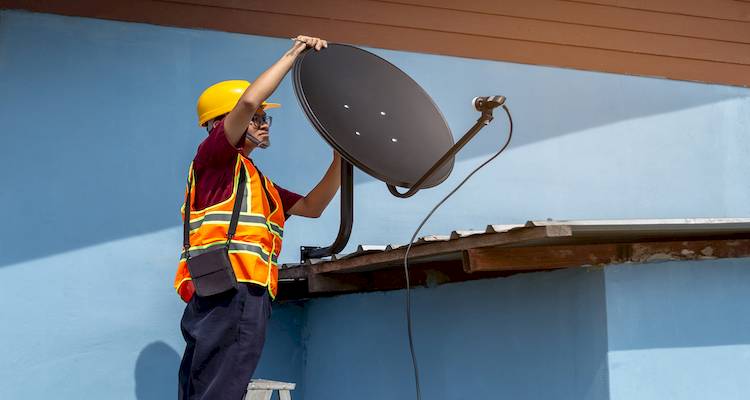
A satellite signal can be sent by pointing the dish to the sky. You can then use proper wiring to send the signal to a recipient and your TV. We'll go over the various supplies you'll need for the job and their costs, so you'll know what to buy if you decide to do it yourself.
Mark the screw positions on the dish mount and hold it up to your house; the mount should cost around £19-£23. An L-shaped rod with a bottom plate that connects to your house supports the Dish.
If you plan to mount the satellite on the edge of your house, make sure the holes align with a wall stud or another strong structure. If you try to anchor it to the siding, it will not hold.
Use a masonry drill bit, which costs between £20 and £40, to break through stone or other rigid surfaces without harming your drill. Screws will set you back around £6 and £7. Next, use a hammer which will cost around £9 - £30, and a chisel which costs £7 - £13, to install the plugs into the wall.
Apply a chisel tip to one of the bolts. With a couple of decent whacks on the chisel's handle, drive the bolt into the wall. Hammer the bolt against the wall until it is flush.
Connect the antenna bracket costing between £15-£40, to the low noise block (LNB) arm costing between £9-£30.
Additional Costs
When installing a satellite dish in your home, there may be additional costs that you choose to incur or minor factors that influence the overall cost. We'll go over the various extra jobs and their costs here.
Replacing Roof Tiles
It typically costs £170 to replace five broken tiles, assuming no scaffolding or access issues. If a ladder and a certain portion of cement bedding are required, replacing five tiles will cost around £225.
If Scaffolding is required and the tiles are hard to come by, a five-unit replacement could cost around £500.
You might be wondering how much a new roof cost. If you want to replace the entire roof, a new roof costs around £10,000 or more! Numerous factors can affect the overall cost.
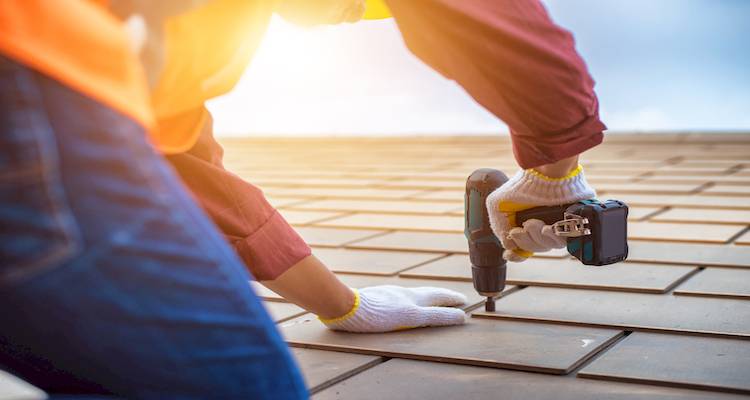
For example, the number, size, and type of roof tile will significantly impact the supply cost, shaping the overall cost. Other important factors include your location in the UK, the ease with which you can access your roof, and the type of roof.
As a result, the cost of replacing roof tiles can fluctuate due to various factors such as supply and labour costs.
If you would like further information, please refer to our guide on the costs of replacing roof tiles.
Gutter Cleaning
To thoroughly clean your guttering, expect to pay between £100-£425 on average. The price varies according to the size of your property and, as a result, the length of the guttering. It could take two to ten hours, depending on the job's complexity.
Cleaning the guttering on a two-story semi-detached house will cost around £100. The size and type of guttering can also impact the overall cost of the job.
The total bill will be influenced primarily by the type and size of the house, as well as the length of the guttering. Another factor to consider is your location in the United Kingdom.
If you would like further information, please refer to our guide on the costs of cleaning your guttering.
Gutter Replacement
The price will vary depending on the material, but you get what you pay for because plastic, the cheapest option, also has the shortest lifespan. Guttering is sold by the metre, so expect to pay around £2 per metre for supplies for a standard plastic (uPVC) gutter.
The average price for the same-sized half-round guttering in copper can reach £25 per metre. In addition to gutters, you may require a downpipe, which costs around £3 per metre for plastic and £38 for copper for the same length.
If you would like further information, please refer to our guide on the costs of replacing guttering.
Scaffolding
The cost of hiring Scaffolding varies according to the amount of Scaffolding required. This is a combination of your property's type and the work that will be done. You will also be required to hire the Scaffolding for a minimum of six to eight weeks.
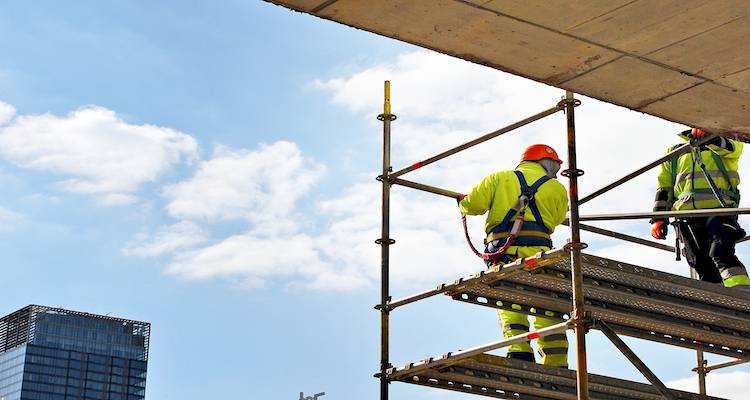
Suppose all you need is a small tower. This would be to finish a job such as repairing hip tiles or guttering. You can consider paying between £640-£1,210 for the entire hire.
The cost of hiring Scaffolding for a large project, such as painting from the outside of the detached home, will be much higher. You should plan on spending between £7,500-£11,500.
Hiring scaffolding can be a less expensive than using your contractor's Scaffolding. However, if you only need the Scaffolding for a short time, it may be better to leave it to your contractor.
This is because most scaffolding businesses will only bother with larger jobs where they can make a decent profit. Therefore, many will make hiring a small amount of Scaffolding for a short period prohibitively expensive.
If you would like further information, please refer to our guide on the costs of hiring scaffolding.
Aerial/Satellite
As you might expect, not all television aerials or satellite dishes are created equal. A wide range of options are available, with basic aerials starting at £15 and more expensive aerials costing hundreds of pounds. In most cases, the cost of an aerial will range between £15-£50.
Labour Costs and Timescales
Accredited engineers use benchmarked materials to install expert, high-quality installations as cleanly as possible. This distinguishes between installing 4-5 satellite dishes per day and installing 12 dishes per day.
Many satellite installation companies install 12 or more dishes per day. Some of them are multinational corporations. Aerial Concepts are fewer installations installed to a higher and much neater standard.
Apart from the various satellites, there are frequently numerous ways to install satellite dishes. Aerial Concepts favours concealing any dish as much as potential, resulting in a much neater installation than one might expect from some of the larger satellite installation companies.
You can keep your dish hidden instead of in front of your house using a different bracket, pole, or both. However, because of the equipment required and the possibility that it will take time, this affects the cost of each satellite installation.
Installations will always take longer when they are smaller. As a result, they are pricier. However, the extra effort is well worth it. As a result, it is best to look at your special set-up and give you the best choices, let you know what the various costs are and decide what's right.
When determining the price of your aerial installation, you must include labour costs. The difficulty of the job, as well as the time required to complete the installation, will determine this.
A typical installation might cost between £100-£150 and include an aerial, pole, and basic bracket. The engineer should need around 2 hours to install a replacement aerial, which would cost around £50.
Prices always are quoted in terms of prices. These prices are for labour only, and assume you have your satellite—Sky Dish Installations with two cables from the dish cost between £150-£180.
The cost of a customer's own Sky Installation ranges between £120-£150, while Hot Bird Satellite Installations range between £140-£200.
It's never fun to have people working on your house, and not knowing when they'll finish can make it even worse! Your engineer will arrive at your home within the specified time frame on the day of your installation, though the installation could take longer. A typical installation takes about an hour, and a replacement takes 30 – 45 minutes.
When the engineer arrives, they will discuss the best location for your satellite dish and the best path for the wires leading from the Dish to your Sky box with you or the adult you've designated to be present during the appointment.
Because the Dish will be installed outside, a few cablings will be connected to the outside, and holes will be drilled to enable the cables to pass through the wall and into your home.
Internal cables are frequently nailed to skirting boards. After installing your device, the engineer will show you how to use your box and view programmes. Sky TV will be available to you on the same day as your installation.
The time it takes to install a new aerial is based on the following factors:
- Your present location
- Pole length is necessary
- If new cables are required within the home
- Whether a splitter or amplifier is required
- If you have a very high roof with difficult access to the roof, expect to pay more for an aerial installation
Cost Factors of Installing a Satellite Dish
Many factors affect the overall cost of installing a satellite dish. Here we will go over the different cost factors when installing a satellite dish.
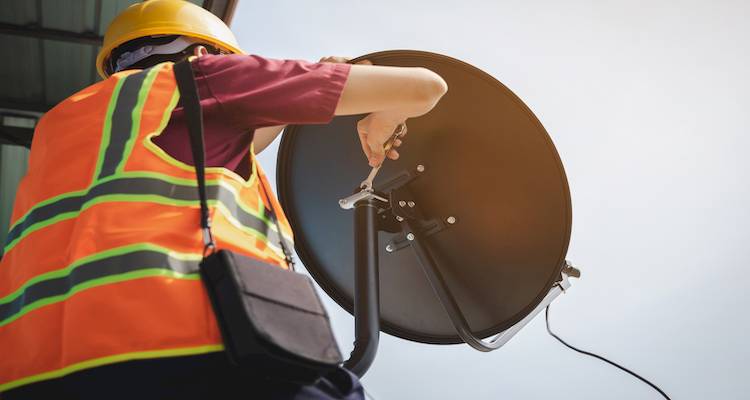
Preparation
It is critical to consider any necessary preparation or construction work to finish your TV aerial installation. Will the old aerial, for example, must be removed?
The Freeview Signals
Your fitter will ensure you get good reception. However, some areas have a stronger signal than others. If the signal is strong enough, the antenna can be installed at gutter or loft level, saving money. In areas where the signal is poor, the antenna must be raised, and an amplifier may be required, raising the cost.
Satellite Dish Height
The cost is determined by the height of the installation, the wiring set-up, and the number of required TV ports. Higher-end installations and those that require wiring to be installed from within (rather than on the building surface) will cost more. In addition, each additional TV port raises the price.
Count of Tradespeople
The cost of installing a satellite will also vary depending on the number of professionals hired. For example, the labour cost will be much lower if only one tradesperson is required to install than if two, three, or more workers are required.
Duration
The higher the labour cost, the longer it takes to install the satellite. The longer the hiring period, on the other hand, the more you'll pay, with some homeowners hiring an expert for several days and others for weeks and even months.
What's Involved in Installing a Satellite Dish?
While you may believe installing a satellite dish is tough and time-consuming, it is not. We'll go over how to install a satellite dish here so you know what to expect.
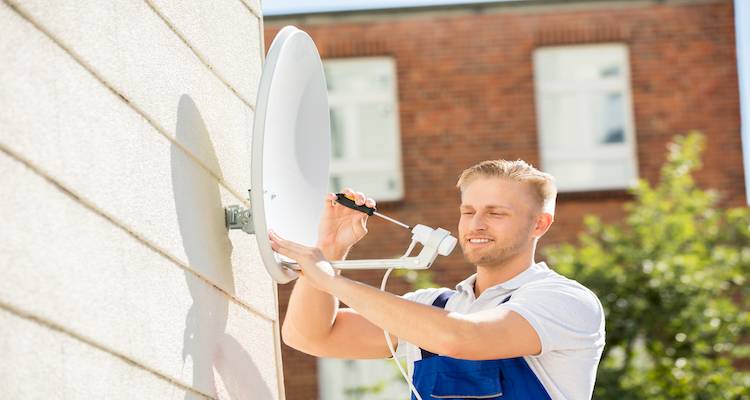
Select a Location
Your Dish should have a clear view of the southern sky. Selecting a location where structures or trees will not obstruct the satellite signal is critical. You should also ensure that new foliage does not obstruct the signal.
You may have to clean snow or debris off the Dish or adjust its alignment, so choose a location where you can easily reach it. Installing the Dish near power lines or other service utilities poses a safety risk.
Increase the Mast
Now that you've decided on a location for your Dish, it's time to install the mast, which is the pole to which you'll attach the satellite dish. Using the level, check that the mast is plumb, then pursue the instructions included with the kit to secure the mast in place.
Next, place the Dish atop the mast, facing the southern sky. Use a compass if you're not sure which direction is south.
Centre the Dish
The Dish must then be aligned. This simply means adjusting the Dish's angle or tilt to receive the satellite signal. A satellite signal metre is the simplest way to determine the correct tilt.
Tilt the dish until the metre indicates a strong signal, then tighten the Dish to the mast with the screws included in the installation kit.
Connect the Satellite Dish and Receiver.
Locate a location near your TV and drill a hole in a wall of your home with the 3/8-inch bit. Then, connect one end of the cable to the satellite dish, feed it through the hole, and connect the other end to the receiver.
To begin, ensure that the system is operational. Once you've determined it is, use a weatherproof sealant to seal the hole around the cable entry point to help prevent water damage.
System Evaluation
Connect the transmitter to your TV using the cable that came with it. Next, turn on the satellite receiver and television, and then follow any additional installation instructions from your satellite service provider.
Can I Install a Satellite Dish Myself?
Many of us would like to install a satellite dish. Satellites improve our TV signal and quality, provide us with new channels and services, and make our lives easier.
Their installation, on the other hand, can be anything but simple. If you thought you could install a satellite dish yourself, you must be aware of the significance. As well as the potential consequences.
In addition, legal issues must be first addressed if a satellite dish is to be installed on a house roof. In general, a parabolic mirror may be installed by the owner or with his or her permission.
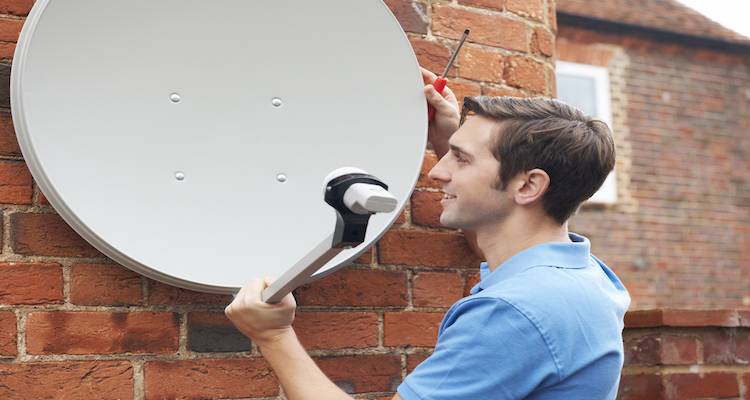
Attaching the satellite dish to an existing mast is recommended and practical. A chimney or a balcony railing provides ideal conditions for self-mounting a satellite dish. If the satellite dish is to be mounted straight on the roof, a special brick with a suitable holder must be inserted.
Before installation, it is critical to determine whether the intended location is conducive to optimal reception. If trees or other structures obstruct the view, a different installation must be considered. As a result, trees may sometimes need to be cut or trimmed. Attempting all the above on your own may raise some concerns.
You may have thought you had taken all necessary precautions when installing a satellite dish yourself. Working at heights, however, is not always as simple as it appears.
Working at heights, on the other hand, necessitates specialised training. As a result, it is not appropriate to take on this project without the assistance and guidance of an expert.
Building Regulations & Planning Permission for Installing a Satellite Dish
Check if you need planning permission, listed building approval, or permission from the landlord or owner before purchasing or renting an antenna. It is your responsibility to position the antennas correctly.
The Town and Country Planning allows you to install antennas up to a certain size on your property without the need for planning permission. This general permission is conditional on the type and location of your home.
Some structures are 'listed' because of their historical or architectural significance. Your local planning department can tell you if the structure is 'listed.' If you live in a 'listed building' you must usually apply for 'listed building consent.' This is not the same as a planning permit.
Any antenna that alters the character or appearance of a listed building or its setting requires a listed building consent.
Types of Satellite Dish
Suppose you are thinking about installing a satellite dish or want to learn more about the various types of satellite dishes, their differences, and which one you should get.
Here we will discuss the various types of satellite dishes and their benefits and drawbacks!
Dishes Made of Steel
Steel is the most common material used in satellite dishes. Almost always, this is painted steel.
Steel dishes have the advantage of being both durable and affordable. The main drawback of coloured steel dish antennas is that they rust easily due to the shorter expected dish lifespan or the possibility of rust stains on your wall.
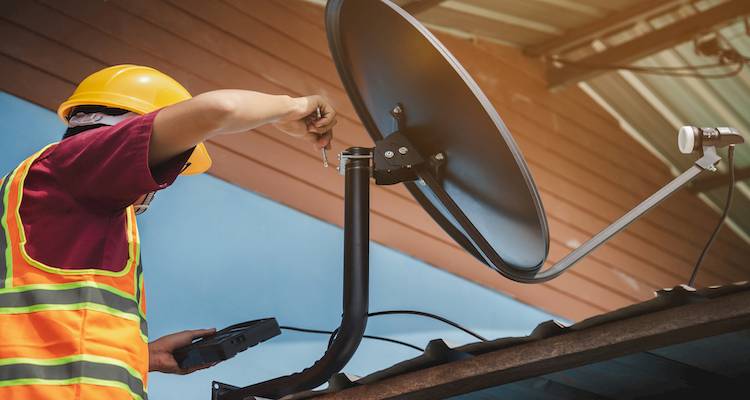
They are also unsuitable for seaside or marine environments because they do not last long. You might even consider painting the Dish to keep rust at bay and prolong its life.
Pros
- ✔ Strong
- ✔ Affordable
Cons
- ✖ They can rust
- ✖ They are not long-lasting
Dish Made of Aluminium
The next alternative you could consider is an aluminium dish. Because these are generally more expensive than steel dishes, your satellite dish installation is more costly.
Many individuals assume that aluminium does not rust, which is technically correct since rust is a type of corrosion unique to iron and steel, but aluminium does discolour.
This is not an issue because the underpinning metal will eventually be protected. Aluminium is also very light, making a tough installation high up a ladder and on a roof easier.
Pros
- ✔ Lightweight
Cons
- ✖ Expensive
Dish Made of Fiberglass
Fibreglass is a fabric that is reinforced with plastic fibres. The primary advantage of a fibreglass satellite dish is it is not made of steel or corrosive material, so you will not have to stress about rust and other types of weathering, making them an excellent choice for beachside and marine installations.
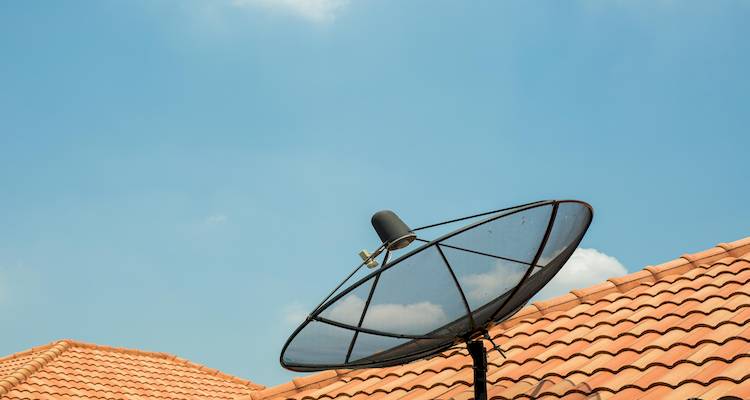
Compared to other types, the most important drawback of fibreglass dishes is their high cost. Another disadvantage of fibreglass is that it is not as strong as steel; however, this is not a problem with satellite antennas because they are rarely touched again after installation, except by high winds.
Pros
- ✔ It does not rust
- ✔ It is suitable for use in inclement weather
Cons
- ✖ Expensive
- ✖ Not as sturdy as steel
Satellite Dish Offset
When viewed from above, offset satellite dishes do not appear to point at the sky. However, the signals are reflected in the offset position because the LNB feed arm and LNB are positioned to one side of the parabolic reflector.
Pros
- ✔ Smaller dish size is possible
Cons
- ✖ None
Solid Dishes
When contrasting satellite dishes, "solid" refers to the parabolic reflector. In contrast to mesh/perforated satellite dishes, it has no holes.
Solid satellite dishes are the most popular and, generally, much better for beachside and marine environments since rainwater and humidity have fewer places to enter and rust/corrode the metal.
In addition, solid dishes are more popular and best suited to the higher frequencies used by satellite television or satellite broadband services.
Pros
- ✔ Popular in the United Kingdom
- ✔ Effective in inclement weather
Cons
- ✖ It has no holes
Hiring Contractors for Installing a Satellite Dish Checklist
It's a good idea to prepare a list of questions to ensure that the professional you're looking to hire is a good fit for you and meets the necessary standards. Use the following questions to ensure that your expert is up to the task:
- Request a written quote from them. Any reputable contractor will gladly provide you with a written quote, allowing you to see exactly what's included in the price
- If they are accredited – some installers are accredited by companies like the sky, which is a great way to ensure you can trust their work ethic
- Inquire about their previous experience
- In exchange for their references, if they can provide references, you can be confident in their abilities and may even be able to view some of their previous work
- If they and their equipment are insured. This can protect you from legal action if they or your property are damaged while visiting your home
FAQs
How does a satellite dish work?
What direction do you face a satellite dish?
How do you connect your satellite dish to your TV?
Is a satellite dish better than an aerial?
How do I choose a satellite dish?
Sources
https://www.instructables.com/How-to-Safely-Install-a-Satellite-Dish-DIY-Style/
https://www.adsdigital.co.uk/blog/install-satellite-dish
https://sterlingsatellite.co.uk/can-you-install-a-satellite-dish-yourself/
https://www.planningportal.co.uk/permission/common-projects/satellite-tv-and-radio-antenna/planning-permission-general-information

